Looking to improve the productivity levels at your organization, but not sure where to start?
Your employees’ productivity depends on a variety of factors, and you can’t pin it down to just one or two aspects. Unfortunately, you can’t afford to leave out any of these factors either, or else you’ll have an inaccurate picture of employee productivity.
But don’t worry.
In this article, we’ll cover everything you need to know about the factors of productivity. We’ll highlight the most important factors of productivity and how you can improve them easily.
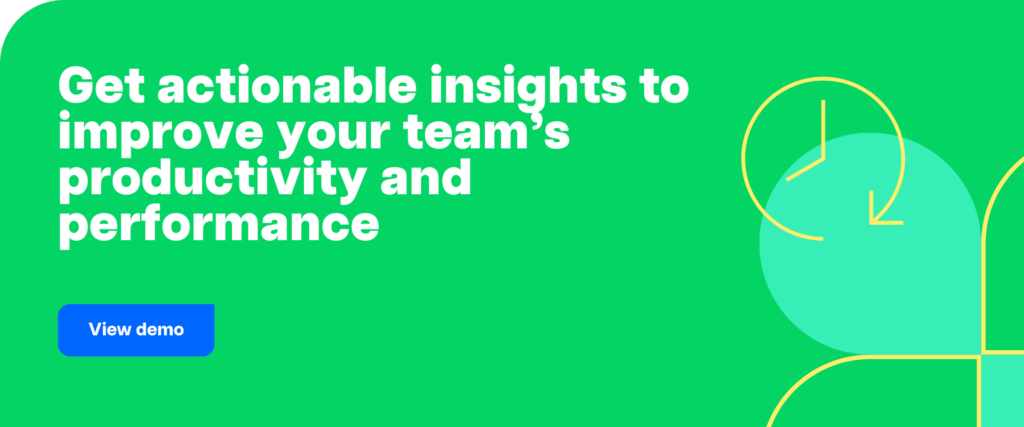
Table of Contents
- What is productivity and why is it crucial for your business?
- What are the most important factors of productivity?
Let’s get started.
What is productivity and why is it crucial for your business?
Generally speaking, productivity refers to how fast you can produce a specific output. It’s often combined with a factor like efficiency to determine how many resources went into producing that output.
High productivity can be achieved by either reducing the raw materials, labor, and time put into the production process or producing more with the same amount of production factors or resources.
But how does productivity affect your business?
Generally, increased productivity results in an increase in profits. And that’s because you end up increasing your output with the same amount of resources or even fewer resources. This generally leads to more cost-effectiveness and increased profits!
That’s why improving productivity is a key factor in determining your business’ success.
But to do that, you need to know which factors impact productivity, and how you can tweak them to work in your favor.
What are the most important factors of productivity?
There are many factors that can affect productivity rates at your company.
For example, you have individual productivity, capital productivity, employee engagement, and technical efficiency – all of which add up to multifactor productivity, aka, total factor productivity (TFP).
Sound overwhelming?
Don’t worry. It doesn’t have to be.
Let’s take a look at the most important factors of productivity and how you can measure, analyze, and improve them.
1. Human capital (employee productivity)
Your employees are one of the main factors that can increase productivity and your company’s economic growth.
And did you know that a happy employee is up to 20% more productive?
That’s why knowing the key factors that affect employee productivity can be a game-changer for your business.
Here are some important factors affecting employee productivity:
A. Employee engagement
Employee engagement is a critical productivity measure for improving your business’ success.
For example, did you know that engaged employees are more productive and bring 21% more profits to your company than disengaged employees?
So how do you increase employee engagement in your organization?
Investing in your employees is a good way to get higher productivity, better labor efficiency, and increased engagement.
Create a positive working environment, encourage feedback, and always set achievable goals — and you’ll see a significant productivity improvement.
Remember, setting unclear and unattainable goals usually results in low productivity and loss of motivation because it makes employees feel confused and unsure of how to proceed with their work.
But when you set clear and achievable goals, your employees feel more engaged and incentivized to improve at their jobs.
B. Employee satisfaction
Employment satisfaction is another useful productivity measurement closely related to employee engagement.
Unsatisfied employees have low engagement at the workplace, which results in decreased labor input and productivity.
Job satisfaction might be affected by many determinants, so make sure you get adequate feedback from your employees. This way, you can improve their work environment and workload based on what they tell you.
This can increase their satisfaction since they see that you care not only for the bottom line of your business but also for your employees’ well-being.
C. Employee training
An untrained employee will drag your productivity down.
Think about it.
If you have someone untrained at the job, you’ll have an employee that doesn’t know what to do or how to do it.
The result?
They end up spending hours trying to figure out the basics of the work instead of doing actual productive work.
However, merely having an employee training program isn’t enough.
Training is a significant productivity factor that should be comprehensive and thorough. Take your time, talk to your employees, and explain how their role affects the organization’s operations, so they see the big picture.
This way, you increase their capability of handling general things on their own, rather than merely giving them role-specific know-how and limiting their learning.
D. Employee health
Ensuring your employees don’t overwork and take care of their physical and mental health is a vital factor for labour productivity.
Remember, a healthy employee has more mental and physical energy to cope with their everyday tasks and achieve greater productivity and efficiency levels.
A sick or burned-out employee, on the other hand, will take much more time to complete the same tasks simply because they don’t have the energy to do so.
To make sure your employees stay in good shape, initiate different wellness programs, and encourage your employees to participate. You can also choose to serve healthier snacks at your office cafeteria and give away gym subscriptions to your employees.
Even though this may seem like a hefty investment in the short term, you’ll get much better long term productivity measurement results.
2. Work environment
Another set of factors that affect workplace productivity is working conditions.

Let’s see how you can improve them to amp up labour force productivity:
A. Temperature and light
If your facilities’ temperature isn’t taken care of, it can significantly decrease your productivity gains.
For example, if you’re trying to save up on electricity bills in the winter, it will cause your workplace to be far colder than usual. As a result, people will be preoccupied with keeping themselves warm and less concentrated on the work they need to get done.
Another thing to focus on, is lighting. Poor lighting creates difficulties for employees to get their job done, while lights that are too bright might lead to employee discomfort and even migraines.
B. Using the right equipment
The equipment you use can affect productivity significantly. This is especially important for physical capital like production machines and computers.
Remember, a poorly designed tool might be less costly right now but will cost you more in the long run.
For example, let’s take a computer.
If you purchase a slower, laggier computer, it’ll probably cost you far less than buying the latest model in the market.
However, this lag will result in wasted minutes for your employees every single day of the week. This, in turn, can cause frustration – affecting their job satisfaction and further reducing their productivity in the long run!
C. Organization of employee workstations
A desk cluttered with paperwork, and different files can slow down your employee’s work processes significantly. Similarly, having employees working too closely together in a crowded workspace is not ideal.
Environmental factors like this make your employees feel more stressed, chaotic, and distracted.
Improving this organizational factor will declutter employee workstations and your office space – leading to increased employee satisfaction and a productivity increase.
3. Technology
Almost every modern business is highly reliant on technology these days, and they’re always on the lookout for the next best app or tool.
It’s important to note that this technological change is crucial for achieving productivity level increase. Improving technical factors like these can help you do more with less and tremendously increase your productivity growth.
Let’s look at 3 of the useful productivity tools that can help you be more productive:
A. Project management tools – Basecamp
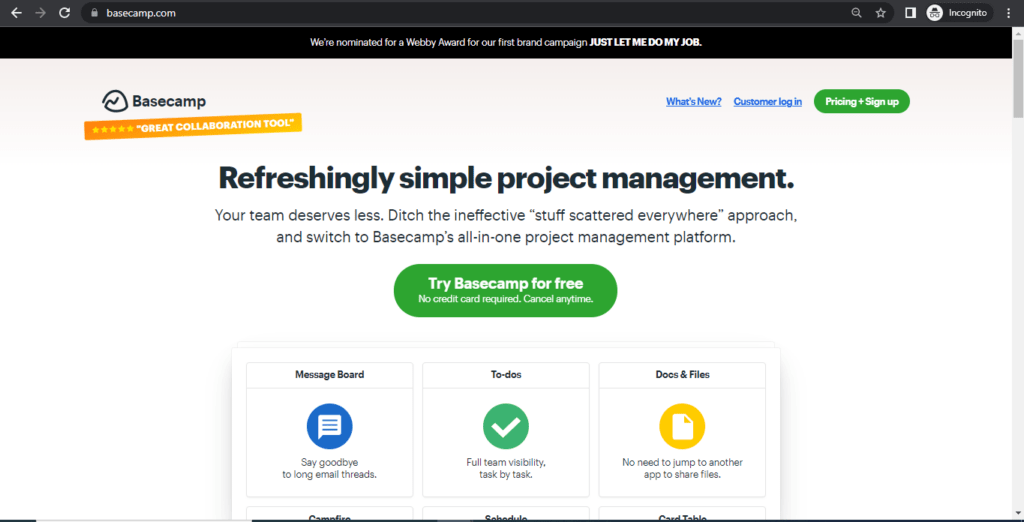
Basecamp is a powerful project management tool that can help you track your productivity over different projects. You can see your employees’ progress, check if they can finish a project on time, or verify if you’re lagging.
It’s one of the easiest ways to create a positive impact on both labor productivity and efficiency rates.
The platform also offers group chats and direct messages to reach out to your team when needed.
Key features
- Create to-do lists, assign tasks, and set deadlines.
- Build a schedule for every project you and your team members work on.
- Attach files and documents to each project.
- See your project’s progress in real-time with Basecamp’s hill charts.
- Get reports on deadlines, tasks, and upcoming due dates.
Pricing
Basecamp offers a 30-day free trial, and the paid plan is for a flat fee of $99 a month.
User reviews
- G2: 4.1/5 (4000+ reviews)
- Capterra: 4.3/5 (150+ reviews)
B. Communication tools – Slack
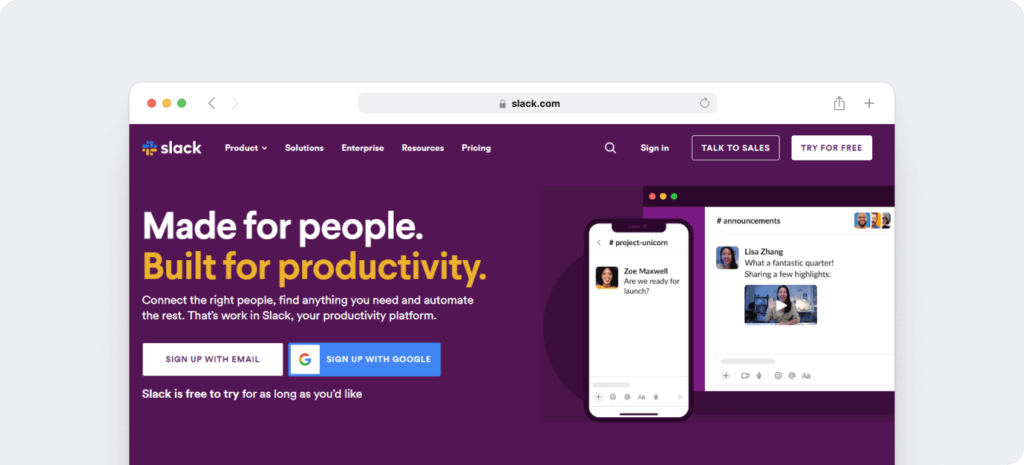
Slack is one of the most popular and most convenient communication tools to help you amp up your productivity. The app is easy to navigate and allows you to connect to other team members instantly.
Key features
- Have separate channels for different conversations.
- Connect with your team through instant chat, audio, and video calls.
- Find documents and important messages quickly with the powerful search feature.
- Integrate Slack with the apps you’re already using.
- Navigate with ease through the app with custom shortcuts and slash commands.
Pricing
Slack offers a freemium plan, and the paid plans start at $6.67 a month for up to 15 users.
User reviews
- G2: 4.5/5 (25000+ reviews)
- Capterra: 4.6/5 (18500+ reviews)
C. All-in-one employee productivity tools – Time Doctor
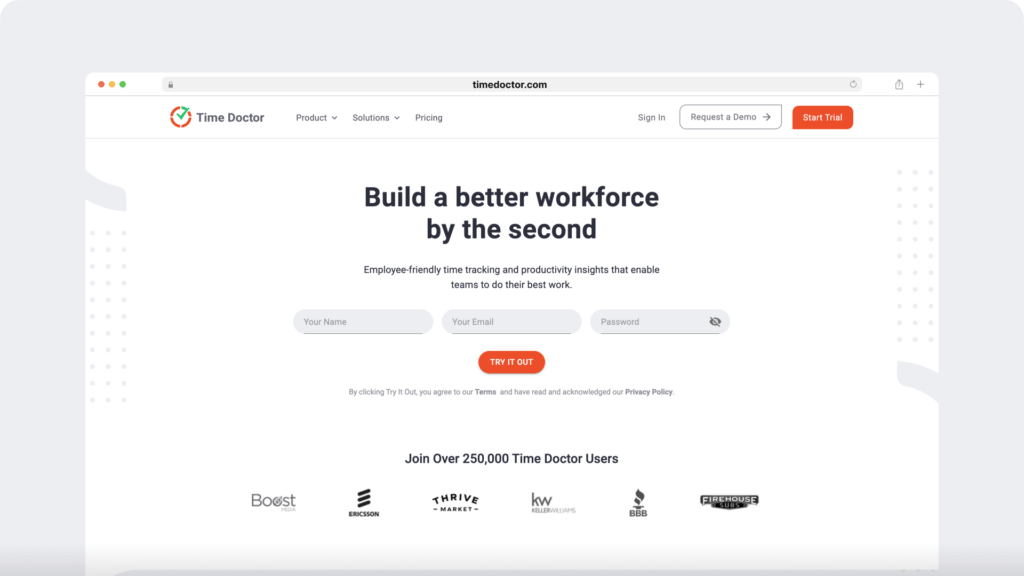
Time Doctor is a powerful productivity and time management software that will help you boost employees’ productivity. Time Doctor is used by businesses of all sizes, including big companies as well as small businesses.
With Time Doctor, your employees can check how long they’re spending on tasks to ensure that they’re not wasting time or becoming unproductive. It’ll also help them stay focused on the job to maximize your profits!
Let’s take a closer look at Time Doctor’s super simple time-tracking feature works:
To get the software running, you just have to:
- Download the app.
- Sign in with your credentials.
- Enter the task or project you want to work on.
- Hit the start button to start tracking your work hours.
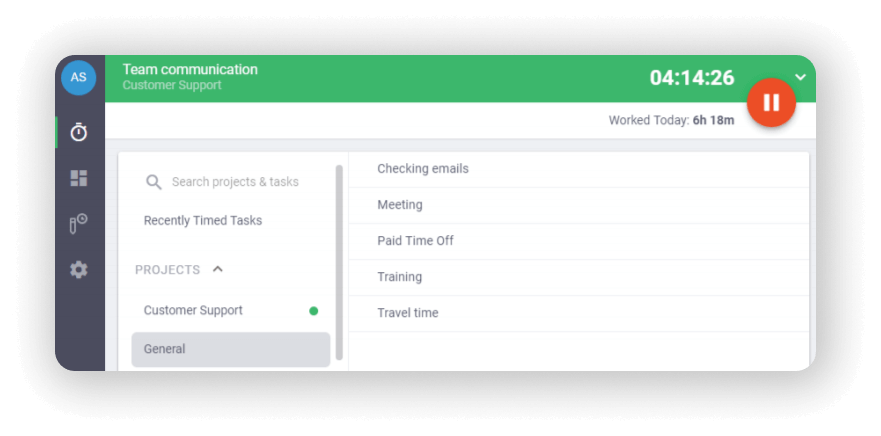
And if you want to take a break or you’re done working for the day, just press the Stop button, and the time tracker will pause.
Note: Time Doctor also has an automatic time tracking mode for maximum ease of use.
Here’s a look at a few other Time Doctor features that help you boost workplace productivity:
1. Productivity ratings
To help your employees focus only on work-related tasks and apps during work hours, enable the Productivity Ratings feature.
With it, you can categorize sites and apps as:
- Productive
- Unproductive
- Neutral
- Unrated
With this feature, your employees will have a clear idea of how much time they spend on each category. This way, they can identify where they’re wasting time and how to boost their productivity.
2. Productivity reports
To get a more accurate idea of employee productivity, Time Doctor also generates powerful productivity reports for you. This way, you get a top-down view of the productivity levels of your employees.
Some of the reports generated are:
- Productivity reports: See the productive/unproductive time of each employee based on the Productivity Ratings.
- Projects & tasks report: See the time an employee spends on a specific task or project.
- Timeline report: Check the total time tracked, time spent on each task, and time spent on breaks.
- Web & app usage report: See how much time each employee spends on a specific site or app.
Pricing
Time Doctor offers a 14-day free trial, no credit card required while the paid plan starts at only $7/user per month.
User reviews
- G2: 4.3/5 (100+ reviews)
- Capterra: 4.5/5 (300+ reviews)
Wrapping up
Ensuring that you encourage productivity growth can make a big difference to your business’s success.
And no matter which factors of productivity you want to concentrate on, remember that productivity is a continuous process, and you should always keep an eye on it and optimize your operations.
Also, to get the most out of your time and resources, use some of the productivity tools we mentioned here to guarantee sky-high productivity rates in no time!

Liam Martin is a serial entrepreneur, co-founder of Time Doctor, Staff.com, and the Running Remote Conference, and author of the Wall Street Journal bestseller, “Running Remote.” He advocates for remote work and helps businesses optimize their remote teams.


